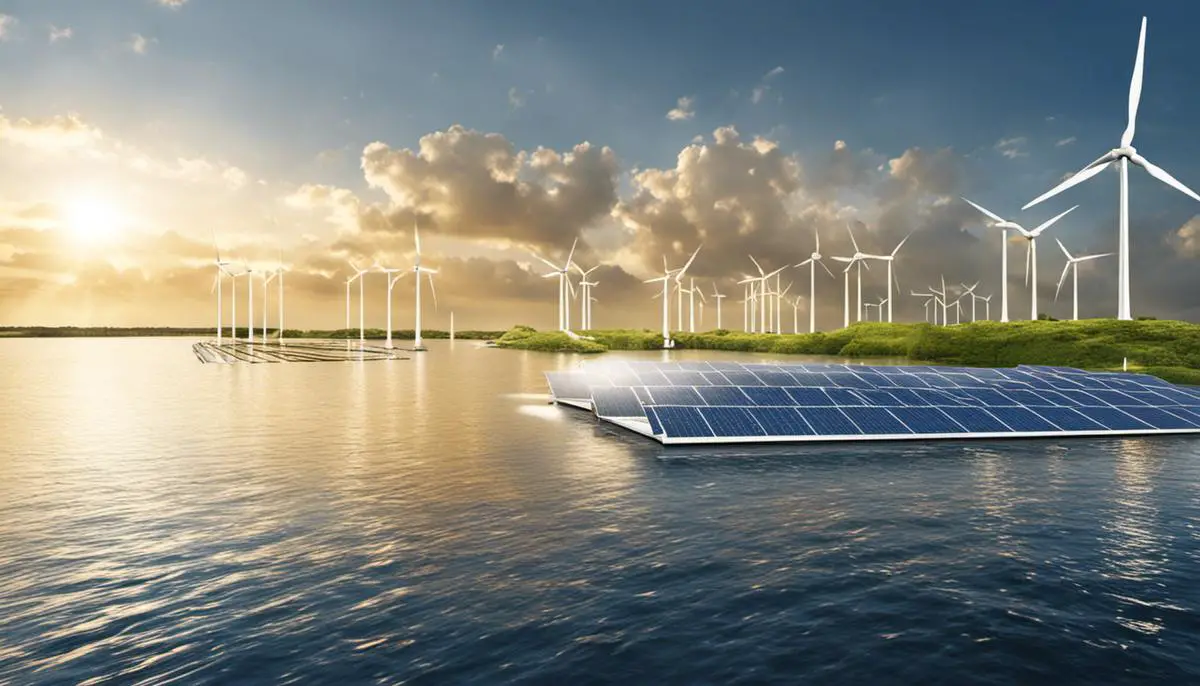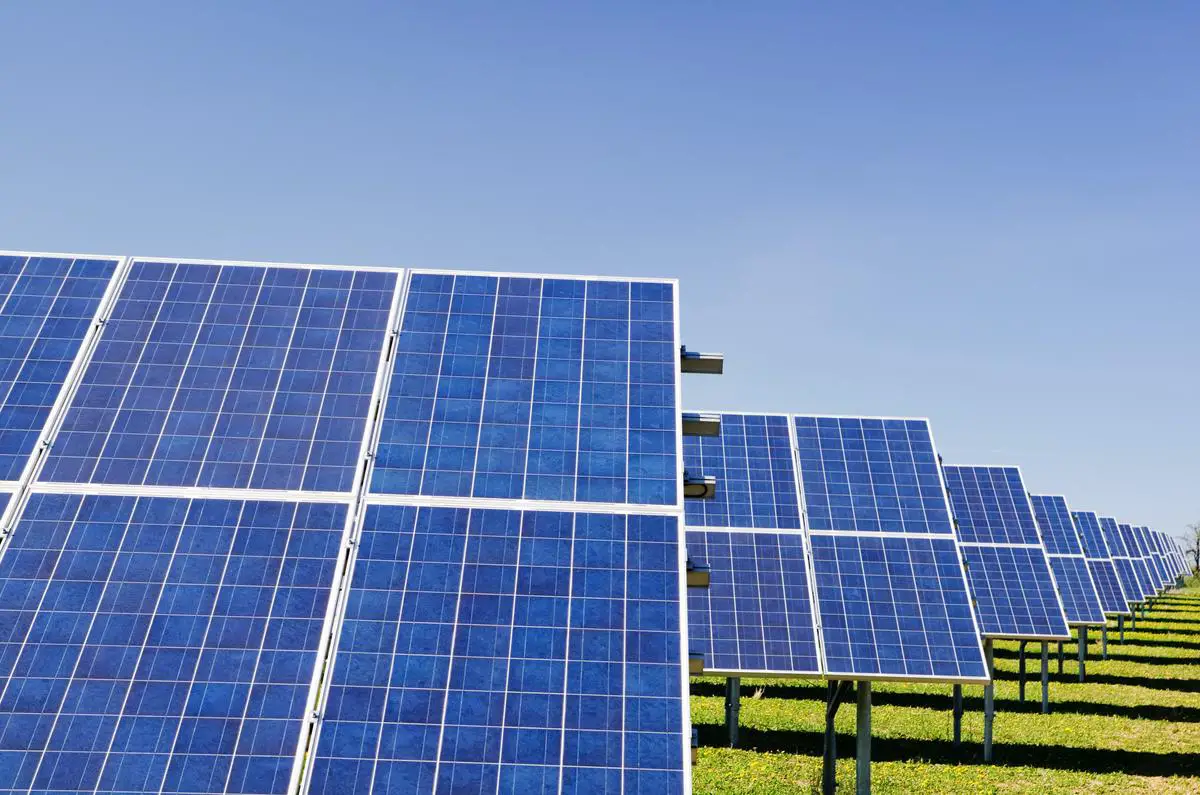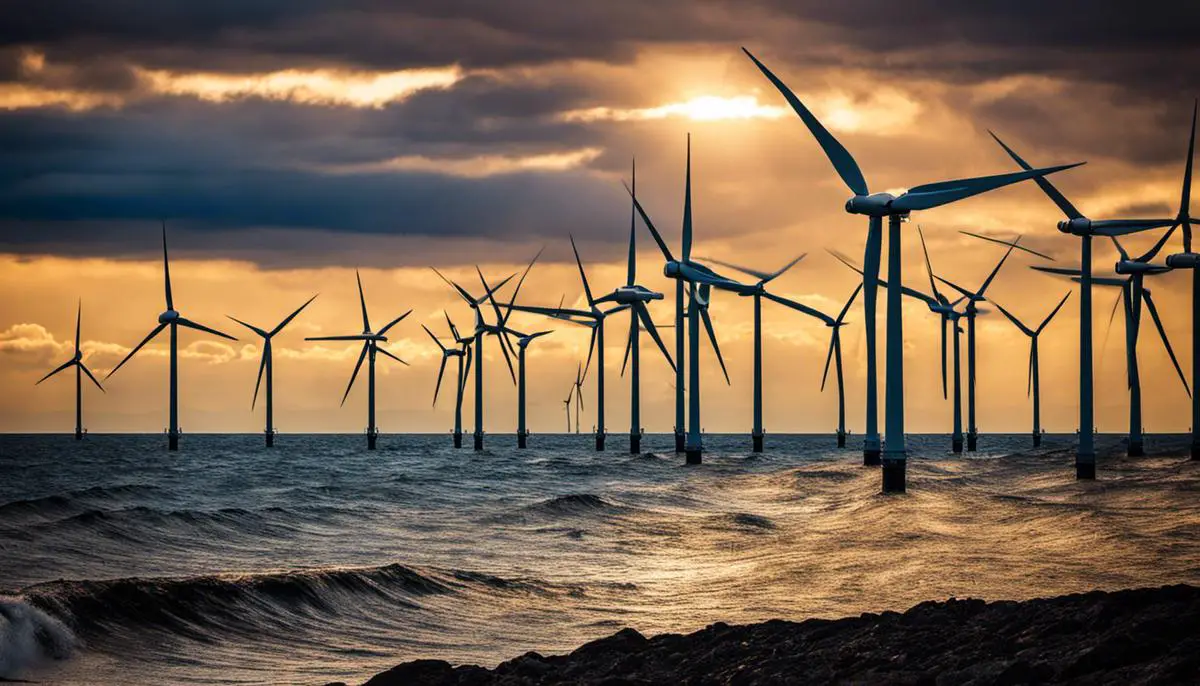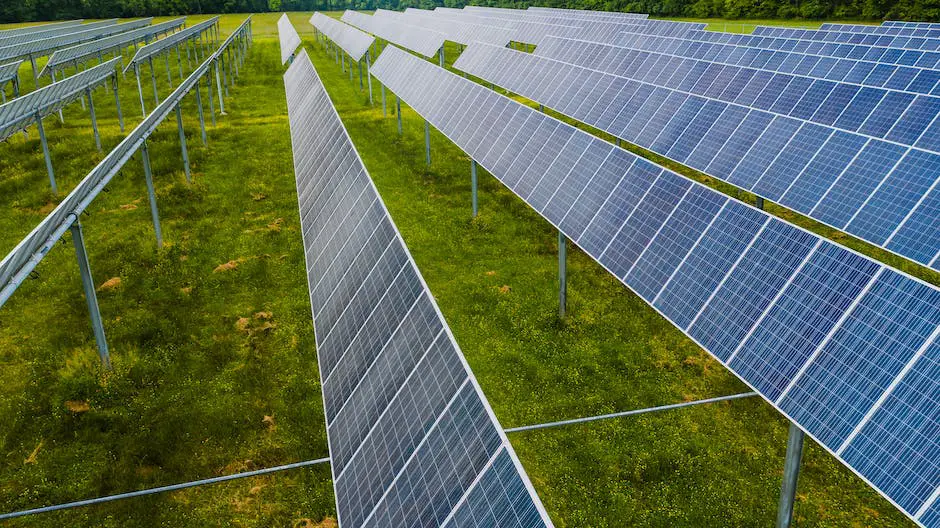As the world wrestles with the damaging impacts of fossil fuel consumption, the shift toward renewable energy innovations and solutions becomes more imperative. The emergent advancements in this field not only promise a sustainable source of power but also offer ways to grapple with the ever-increasing energy needs of the growing human population given the outright dependence on technologies that require power or electricity.
This intensive look into renewable energy opens the door to a deeper understanding of its basics, the innovative strides being made in solar and wind power sectors, and the future possibilities these energy sources possess.
As we delve into this latest research and advancements, we will witness how a future powered predominantly by renewable energy is not only possible but also increasingly likely. Thus, a sustainable source of energy will ensure the continued advancement of the human race.
Table of Contents
The Basics of Renewable Energy
Renewable Energy Defined
Renewable energy, fundamentally, is energy that comes from resources that are naturally replenished within a human’s lifetime. This includes sunlight, wind, rain, tides, waves, and geothermal heat.
The main advantage of using renewable energy sources is that they are continuously replenished and are sustainable in the long term, unlike fossil fuels such as oil, gas, and coal, which are finite resources.
Types of Renewable Energy
There are various types of renewable energy, each having different mechanisms of operation and uses. Solar energy, for example, uses solar panels to convert sunlight into electricity. Solar power can be used for heating, lighting, and to generate electrical power for residential, commercial, and industrial use.
Wind energy harnesses the power of the wind to propel the blades of wind turbines. These turbines then spin a generator to create electricity. Wind farms are often built in areas that have strong, regular winds. Like solar energy, wind energy is also used for miscellaneous purposes.
Hydropower, or water power, is generated by using water to spin turbines or water wheels. The movement of water, whether it’s from waterfalls, tides, or rivers, can be a powerful force for creating electricity.
Geothermal energy taps into the Earth’s internal heat to generate electricity. It uses the steam and hot water produced inside the Earth to power generators. Geothermal power stations are usually built where geothermal reservoirs are located within a mile or two of the surface.
Biomass energy is derived from plants and plant-derived materials. Wood chips, corn, and switchgrass are common sources of biomass energy. Biomass can either be used directly via combustion to produce heat, or indirectly after converting it to various forms of biofuel.
Renewable Energy Innovations
There is an ever-increasing drive to optimize and innovate in the field of renewable energy, evident through the emergence of numerous advanced technologies. Human imagination is limitless.
1. Floating Solar Panels
Floating solar panels, also called floatovoltaics, are a new trend designed to leverage sunlight over water bodies, addressing the challenge of land scarcity for solar farms (Fig. 1). This approach is highly recommended in places or countries with calm waters such as lakes and basins.
2. Offshore Wind Farms
Similarly, we’re seeing the creation of offshore wind farms to capture more robust and consistent wind patterns found over open seas (Fig. 1). The largest among these offshore wind farms is found in Kincardine, off the coast of Scotland.

3. Solar Paint
An intriguing innovation, solar paint, has also been invented recently. With this technology, virtually any surface has the theoretical capability to generate solar energy.
4. Efficient Energy Storage Technologies
Breaking strides in energy storage technologies are playing a significant role in the adoption of renewable energy.
Lithium-ion batteries, for example, have seen considerable advances, becoming more efficient and pocket-friendly.
Meanwhile, other exciting concepts like gravity-based energy storage and green hydrogen are also being tested as possible solutions to store surplus renewable energy.
5. Enhanced Geothermal Energy
The geothermal energy sector isn’t left behind, with enhanced geothermal systems (EGS) gaining interest. These systems have the potential to reach and harness geothermal energy from unprecedented depths and locations.
6. Biofuels
In the realm of biofuels, progress has led to the innovation of second and third-generation fuels prepared from non-food crops or waste biomass resources, thereby sidestepping potential issues with food supply.
Embarking on understanding these various forms of renewable energy innovation is a central step in the global effort to combat climate change and transition to a sustainable, low-carbon future.
Now let’s see the advancements in the dominant renewable energy innovations namely solar power, wind energy, and hydroelectric and tidal power. The features of these renewable energy technologies are explained in more detail.
Latest Advancements in Solar Power
Boosting Solar Panel Efficiency
A considerable amount of research and investment has been directed towards increasing the efficiency of solar panels. While the efficiency of contemporary solar panels maxes out at roughly 20%, recent innovations look promising in boosting this significantly.
For instance, perovskite solar cells – a blend of organic and inorganic elements – are showcasing efficiencies beyond 25%.
Moreover, though still in initial development phases, multi-junction solar cells are equipped with layers of semiconductors having varied band gaps. Such a configuration aids in capturing and using more energy from diverse parts of the light spectrum, potentially enhancing efficiency above 40%.
Solar Panel Cost Reductions
A key driver making solar power more accessible is the significant reduction in panel costs. The costs of solar panels have dropped more than 70% over the last decade. This is largely due to innovations in manufacturing, economies of scale, and advances in photovoltaic (PV) technology.
Techniques such as diamond wire cutting have drastically reduced silicon waste, while simultaneously improving the quality of the silicon used in PV cells. At the same time, new players in the market and increased production have led to a more competitive market and lower prices.
Solar Storage Innovations
The improvement of energy storage technology is crucial in harnessing solar power more effectively. Significant strides have been made in the area of battery technology, with more efficient and longer-lasting models coming onto the market.
Lithium-ion batteries are becoming cheaper, and their energy density (which affects the battery’s lifespan) is improving. This can make solar-plus-storage installations more financially attractive and reliable.
Artificial Intelligence in Solar Power
Artificial intelligence (AI) and machine learning are being employed to optimize solar power systems. These technologies can predict energy output based on factors like weather forecasts, enabling better grid management.
By predicting production, utilities can better manage the grid and prevent blackouts. AI can also optimize when and how much power to draw from the grid during times of high demand, reducing costs and increasing efficiency.
Progress in Solar Technology Applications
The development and application of solar technology is taking on innovative new dimensions. For example, the introduction of solar windows with organic photovoltaic (OPV) technology is now possible. This technology paves the way for the development of malleable, transparent solar cells, enabling a window to become a source of electricity.
Solar skins represent another innovative feature, letting solar panels integrate seamlessly into the roof of buildings and homes. This increases both their aesthetic appeal and functional utility by providing a renewable source of power.

Progress in wind energy solutions
Progress in Wind Turbine Design
Significant advancements in the design of wind turbines represent one of the key progressions within the wind power sector. Whereas traditional wind turbines were comparatively large structures with three blades, offshore wind farms like the one near Rhode Island’s coast are now being outfitted with larger, more efficient models based on these initial designs.
These cutting-edge turbines are designed with elongated, lightweight blades that extend further into the atmosphere to harness a greater amount of wind energy. In addition, they employ a refined aerofoil design allowing for more efficient penetration through the air, thus maximizing kinetic energy capture. These innovative technologies contribute to an escalated volume of electrical power generation.
Transition to Offshore Wind Farms
To capitalize on the constant and high-speed winds typically found over the ocean, there has been a shift towards offshore wind farm developments. These offshore wind farms offer major potential for renewable energy. Due to the higher average wind speed on the open sea compared to land, they can produce substantially more electricity.
Further advancements in offshore wind technologies have allowed us to move these turbines further out to sea, reducing visibility from land and opening up a much larger potential area for energy capture. Floating wind turbines, which are anchored to the seabed with mooring lines, are one such innovation. These constructions permit the development of wind farms in deeper waters where fixed bottom constructions are not feasible.
Wind Energy Storage Systems
Alongside developments in turbines, improvements in energy storage systems have made wind energy production more reliable and consistent. Advanced battery systems are now capable of storing surplus energy produced during periods of high wind for use when wind speeds are low. This helps to balance the power supply and demand, making wind energy a more dependable source of energy.
Wind-hydro hybrid systems offer another solution to the intermittency problem. These systems pump water uphill into large reservoirs when there is a surplus of wind energy. When the wind doesn’t blow, this water is released downhill to turn hydropower turbines and generate electricity.
Breakthroughs in Wind Energy Costs
Significant progress has also been made in reducing the cost of wind energy. Economies of scale, more effective designs, offshore advancements, and better maintenance strategies have all helped to reduce the costs involved.
Thanks to these developments, according to the U.S. Department of Energy, the price of wind energy has dropped by more than 70% in the past three decades, making it competitive with traditional fossil fuel sources. Lower costs, coupled with the potential environmental benefits, are driving more industries and countries worldwide to consider wind energy as a viable and sustainable energy source.
Global Advancements in Wind Energy
The rapid developments and sustained advancements in wind energy are leaving profound impacts not only in the United States but also on a global level. Countries such as China, Germany, and Denmark have considerably expanded their wind energy capacities, attesting to the global acceptance and appeal of this renewable energy source.
The innovations in wind energy technologies have brought about substantive improvements in energy production efficiency and have extended the geographical zones capable of exploiting wind energy, thereby offering a more sustainable, greener future in the renewable energy landscape.
However, this also means that areas populated by the wind turbines changes the overall seascape view (Fig. 4).

Innovative Hydroelectric and Tidal power
Overview of Hydroelectric and Tidal Power
Moving on from wind energy, let’s delve into other renewable sources like hydroelectric and tidal power.
The concept of hydroelectric power involves generating electricity from the kinetic energy of falling or flowing water. This is typically facilitated by a dam built on a river, where the water’s downstream force operates a turbine connected to a generator.
In contrast, tidal power capitalizes on the energy harnessed from massive water bodies as they move due to the gravitational forces exerted by the sun and the moon.
Innovations in Hydroelectric Power
Hydroelectric power generation is not a new phenomenon, however, scientists and engineers are innovating to create more efficient and eco-friendly ways to harness this source of renewable energy.
One such innovative development is the pumped-storage hydropower, a type of hydroelectric power generation used as a means of grid energy storage. It works on a simple principle – two water reservoirs at different heights are used. When the demand for electricity is low, excess electrical grid power is used to pump water from the lower to the upper reservoir. During periods of high electrical demand, the water in the upper reservoir is released to generate electricity.
Another innovation in the hydroelectric power sector is the in-pipe turbine system. In this system, the turbines are placed in the water pipes of a town or city. As the water flows through the pipes, the turbines spin and generate electricity. This is a discrete, non-disruptive way of generating renewable energy.
Scientists are also working on harnessing the electricity generation potential of falling rain. This concept, better known as rain power, is yet to be fully realized. However, studies and experimental setups have been able to generate tiny amounts of electricity from raindrops.
Innovations in Tidal Power
Only a small percentage of the world’s electricity is currently generated through tidal power, but the potential for growth is huge. Tidal lagoons are a relatively new concept that can harness the energy of the sea. They are partially enclosed sea areas where the rise and fall of the tide can be used to generate electricity.
Another innovative development in the tidal power sector is the use of underwater turbines that look and function somewhat like wind turbines. These turbines are situated in areas with high tidal movements to capture the kinetic energy generated by the moving water.
Also, tidal kites are a novel concept in the field of tidal energy. These underwater kites are equipped with turbines and are maneuvered in the tidal streams to generate power. They are lightweight, efficient, and environmentally friendly, making them an ideal candidate for future tidal energy generation.
Preserving Aquatic Ecosystems
While harnessing hydroelectric and tidal power, it’s vital to preserve aquatic ecosystems. Engineers and scientists are making strides in minimizing the impact of these renewable energy sources on the environment. For instance, fish-friendly turbines are being designed for use in both river-based and tidal power generation. They have large, slow-moving blades that allow fish to swim through them safely.
In addition to that, power companies are creating ‘fish ladders‘ in hydroelectric dams, which provide a detour for the fish to swim upstream for breeding purposes, protecting them from the dangerous turbines.
Future designs of tidal capture technology are also taking environmental factors into consideration to ensure they avoid harming sea life. This consideration is crucial in sustaining the delivery of ecosystem services critical to human survival and well-being.
Conclusion
To wrap things up, it’s evident that the hydroelectric and tidal energy sectors are brimming with groundbreaking endeavors. These future-forward technologies offer an optimistic solution for meeting our forthcoming energy requirements in a sustainable and eco-friendly manner.
Keeping a keen eye on additional advancements and their broader deployment worldwide is critical in our collective pursuit of cleaner energy sources.
The Future of Renewable Energy
Looking Ahead at Renewable Energy Innovations
The cutting-edge innovations in renewable energy are paving the path for the future of our energy sector. The advent of solar power, wind energy, and additional alternative sources showcases the boundless potential of this industry. Imaginative developments such as lake-based solar farms, energy storing bricks, and even sand-powered energy systems are a testament to the unlimited creative potential within this field.
Floating Solar Farms
One of the most striking innovations in the field of renewable energy is the concept of floating solar farms. These installations function similar to terrestrial solar plants but are strategically placed on bodies of water such as reservoirs or lakes. Not only does this reduce the use of valuable land, but it’s also more energy-efficient since the cooling effect of the water allows the panels to generate more electricity. This technology is quickly being adopted worldwide.
Energy-Storing Bricks
The age-old brick and mortar used in the construction of buildings are being reimagined as energy-storing devices. Researchers have found a way to store energy in bricks, transforming them into a type of supercapacitor. These “smart bricks” are capable of storing electricity like a battery and may potentially power home devices.
Sand-powered Energy
Innovation in renewable energy doesn’t stop there. Another exciting development is sand-powered energy. Heated at high temperatures, sand can be used to generate thermal energy that can, in turn, fuel an electricity-generating turbine. This renewable energy option is especially attractive for desert regions with abundant sand.
Challenges and Future Prospects
While the future of renewable energy seems promising, the journey toward a complete switch from fossil fuels to renewable energy sources is replete with challenges. These difficulties primarily revolve around efficiency, storage, and distribution.
While fossil fuels can guarantee around-the-clock energy supply, most renewable sources such as solar and wind are intermittent. Therefore, finding efficient, cost-effective ways to store and distribute renewable energy is paramount.
Moreover, transitioning to renewable energy requires significant infrastructure changes. Advanced grid systems that can handle variable renewable energy sources need to be developed and implemented.
Additionally, the economic implications of this transition, including job displacements in fossil fuel industries, cannot be overlooked.
Environmental and Societal Impact
The impact of shifting to renewable energy sources extends far beyond reducing carbon emissions and combating climate change. This transition can lead to job creation in the renewable energy sector and help drive economic growth. Developing countries with abundant renewable resources stand to gain significantly from this shift.
Moreover, renewable energy sources reduce reliance on foreign energy supplies, strengthening energy security. With the right policies and technological advancements, renewable energy could ultimately provide cheaper electricity, benefiting consumers.
Society’s transition towards renewable energy also fosters social equity. Easy access to renewable energy sources can help bridge the energy divide and electrify remote and impoverished areas.
Overcoming the aforementioned challenges and successfully transitioning to renewable energy is critical for our future. The impact of this transformation goes beyond preserving the planet for future generations; it also has implications for job creation, poverty reduction, and global peace. The future of renewable energy is bright, filled with innovative concepts and forward-thinking solutions.

The gradual yet focus-driven shift toward renewable energy promises an era of sustainable, green power that doesn’t compromise the health of our planet.
The potential posed by advancements in solar and wind energy, coupled with the groundbreaking research in hydroelectric and tidal power, stands as a testament to human innovation and its adaptability.
As we venture into an increasingly green future, it’s paramount that society not only embraces these changes but also works persistently to overcome associated challenges — driving the world towards a sustainable, eco-friendly era where the environmental impacts are as carefully considered as meeting power needs.
[cite]



